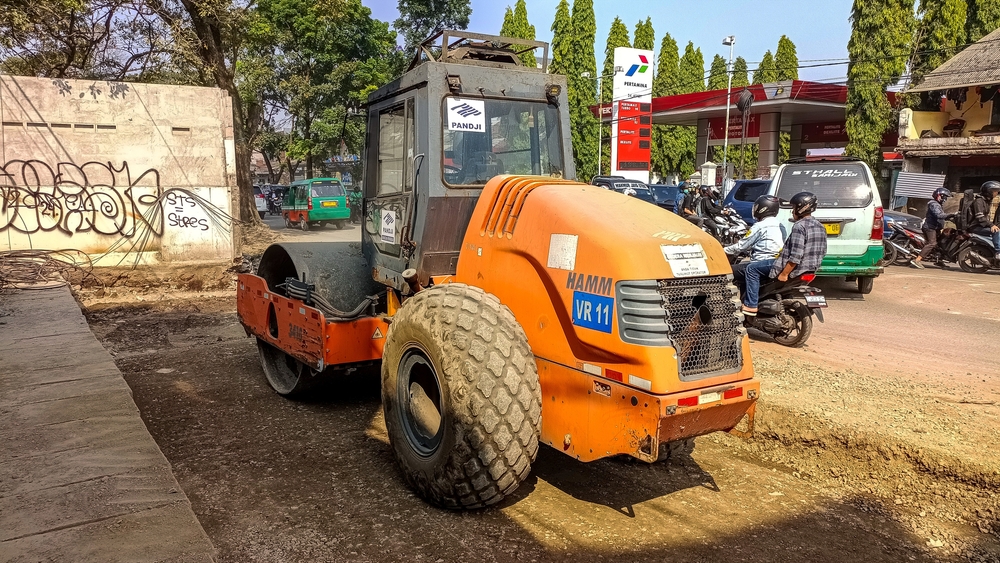Every year, the construction industry loses billions due to equipment downtime, with a significant portion attributable to inadequate maintenance practices.
Emphasizing preventative maintenance is not merely a recommended practice but a necessary strategy to enhance the longevity and efficiency of heavy machinery repair and overall machinery health.
The Fundamentals of Preventative Maintenance
Preventative maintenance is a proactive maintenance strategy employed to anticipate and address potential machinery issues before they escalate into major problems.
This approach contrasts sharply with reactive maintenance, which only addresses machinery issues after a failure has occurred.
Scheduled and systematic, preventative maintenance ensures that machinery operates at peak efficiency, reducing the likelihood of unexpected breakdowns that disrupt production.
Here are some of the critical benefits of implementing preventative maintenance:
1. Reduced Equipment Downtime
Regular and preemptive maintenance interventions help avoid the extensive downtime that results from unexpected machinery failures.
Keeping equipment in optimal working condition minimizes disruptions to operations, enhancing productivity.
2. Extended Equipment Life
Routine maintenance checks and necessary repairs ensure that machines always operate in the best possible condition, which prolongs their operational lifespan.
This regular upkeep prevents the usual wear and tear from escalating into significant damage, thus extending the life of the machinery.
3. Cost Savings
Although setting up a preventative maintenance program can be an upfront investment, it saves money in the long term by drastically reducing the need for expensive emergency repairs and replacements.
4. Safety
Regular maintenance ensures that all machinery operates safely, reducing the risk of accidents caused by equipment failure. This not only protects workers but also helps companies avoid the legal and financial repercussions of workplace accidents.
Essential Practices for Maintaining Heavy Machinery
Effective preventative maintenance is founded on several core practices that must be followed diligently to ensure the longevity and reliability of heavy machinery:
1. Regular Inspections
Conducting frequent and comprehensive inspections is crucial. It’s important to check for any signs of wear, ensure all parts are functioning correctly, and address minor issues before they develop into significant problems.
2. Proper Lubrication
Regular lubrication minimizes friction between moving components, which helps prevent overheating and reduces wear.
Using the right type and amount of lubricant at specified intervals is essential for maintaining machinery efficiency and longevity.
3. Timely Parts Replacement
Proactive replacement of parts that show signs of wear or are nearing the end of their useful life can prevent machinery failures.
Components such as belts, filters, and seals should be monitored and replaced as needed to maintain optimal machinery function.
4. Use of Technology
Advanced diagnostic tools, such as thermal cameras and vibration analyzers, play a critical role in identifying early signs of equipment issues before they lead to failure.
These technologies allow for precise monitoring and are invaluable in a comprehensive preventative maintenance strategy.
5. Effective Record-Keeping
Keeping detailed records of all maintenance activities is crucial for planning future maintenance and predicting when machinery parts will need attention.
This documentation helps create a predictable maintenance schedule and ensures that all necessary maintenance activities are performed.
Leveraging Technology for Maintenance Efficiency
Various software solutions and mobile applications streamline the scheduling, tracking, and management of maintenance tasks, making the process more efficient and less prone to human error.
These technological tools offer several advantages:
Scheduling
Automated systems can help plan maintenance activities based on machinery usage patterns and other critical operational data. This ensures that maintenance is carried out only when necessary, optimizing both time and resources.
Monitoring
Continuous monitoring technologies allow for real-time assessment of machinery conditions, enabling immediate responses to any signs of deterioration. This proactive monitoring is essential for maintaining operational efficiency and extending equipment lifespan.
Data Analysis
Technology facilitates detailed data analysis, providing insights into maintenance trends and equipment performance. This data is instrumental in refining maintenance schedules and practices, ensuring they are as effective as possible in preventing equipment failure and minimizing downtime.
Implementing a Preventative Maintenance Schedule
Developing an effective preventative maintenance schedule involves assessing the specific needs of the machinery and the operational environment. Steps to create a robust maintenance plan include:
Assessment of Machinery Usage: Understand how frequently and under what conditions the machinery is used.
Environmental Considerations: Take into account the environmental factors that may affect the machinery, such as dirt, temperature, and humidity.
Maintenance Calendar: Develop a detailed calendar that specifies when each piece of equipment needs to be checked, what needs to be inspected, and when parts should be replaced.
Staff Training: Ensure that all maintenance staff are well-trained and understand the importance and techniques of preventative maintenance.
Best Practices for Preventative Maintenance Success
To ensure the longevity and reliability of machinery through preventative maintenance, several best practices should be consistently followed:
Consistency
The cornerstone of successful preventative maintenance is regularity and systematic execution. Scheduled checks and maintenance should be non-negotiable and adhered to strictly to prevent breakdowns and ensure continuous operation.
Employee Involvement
Creating a culture of maintenance-mindedness among all employees can significantly enhance the effectiveness of preventative maintenance strategies.
When employees are engaged and informed about the importance of maintenance, they are more likely to take initiative in identifying and reporting potential issues early.
Plan Reviews
Maintenance plans should not be static; they need regular review and updates to accommodate new operational challenges and changes in equipment use.
This dynamic approach allows maintenance strategies to remain relevant and effective, adapting to any alterations in operational demands or environmental conditions.
Professional Engagement
Staying engaged with industry forums and professional networks is invaluable for keeping up with the latest maintenance techniques and technologies. This engagement can provide insights into new strategies and tools that can enhance maintenance practices. A
Additionally, sharing experiences and challenges with peers in the industry can lead to more innovative solutions and efficient maintenance approaches.
Conclusion: Long-Term Benefits of Preventative Maintenance
Adopting a preventative maintenance strategy is a critical investment in the future health and efficiency of a company’s operations. This approach significantly prolongs the lifespan of heavy machinery, reducing the frequency and severity of equipment failures.
Furthermore, this strategy ensures that machinery operates at peak performance, which is essential for maintaining productivity and meeting project timelines effectively.
Ultimately, a robust preventative maintenance program is a cornerstone of successful and sustainable business practices in the demanding and dynamic field of construction.









